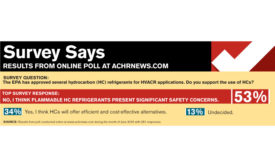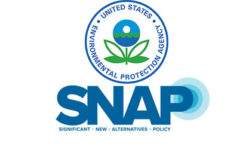Home » hydrocarbon refrigerants
Articles Tagged with ''hydrocarbon refrigerants''
Offers a quicker pull-down time compared to other refrigerants
Read More
Natural Refrigerants Market Worth $1.4 Billion by 2020
Europe is the largest market for natural refrigerants
September 25, 2015
Refrigerants Market Worth $21 Billion by 2020
Stationary air conditioning dominates the refrigerants market
August 24, 2015
Danfoss Examines Future of Refrigerants
EnVisioneering Symposium Examines HCs, CO2, and More
Read More
EPA Cautions Against Using Propane-based Refrigerants
FBI Joins EPA in Issuing Warnings About Unapproved Refrigerants
August 11, 2014
July 1, 2014: EPA Proposes Approval of Hydrocarbon Refrigerants in Select HVACR Applications
This Proposed Action Would Expand the List of SNAP-Approved Substitutes
July 1, 2014
New Hydrocarbon Refrigerants Manual Available
Technicians Will Begin Seeing Systems Using These Refrigerants in the Field
October 21, 2013
Sept. 10, 2013: New Hydrocarbon Refrigerants Manual Available
ESCO Institute Says Only a Matter of Time Before Techs Begin Seeing Hydrocarbon Systems in the Field
September 10, 2013
Copyright ©2024. All Rights Reserved BNP Media.
Design, CMS, Hosting & Web Development :: ePublishing





